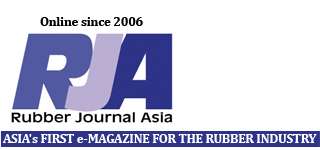In the spirit of the Olympics, specialty chemicals company Lanxess supports this year’s event with products found in athletes’s gears and equipment such as shoes, balls, mats and yes, even running tracks! This feature shows how chemistry is at work in my aspects of our lives
High-tech shoes
The most important equipment for a runner is the shoes. Today’s shoes use a technology similar to that used in modern, fuel-saving tyres.
“Silica technology that gives the tyres good grip and makes them economical also ensures that the soles of the running shoes have good grip on a wet track,” says Martin Mezger, a rubber expert at LANXESS.
The LANXESS material is called Krynac which is particularly durable, flexible and popular. Long-distance runners, in particular, also need special damping properties. “With each step, the loads can amount to around three times the body weight,” says Mezger. “Over a long period, that puts enormous pressure on the joints.”
To serve as a cushion between the foot and the ground, the midsoles are made of state-of-the-art, high-performance rubber. Levapren from Lanxess is one such material. This ethylene vinyl acetate rubber (EVM) has a springy, stabilizing effect.
“Depending on the running style, softer material is often used for damping in the heel region, while more elastic material is used on the ball of the foot to ensure that as little kinetic energy as possible is lost,” explains Mezger. Every shoe manufacturer has its own recipe for success, and all the big names use Lanxess components.
Hot tyres
Anyone bidding for a place on the podium in disciplines performed with two, three or four wheels is particularly dependent on Lanxess technology. This includes track cyclists, mountain bikers, triathletes and BMX riders as well as the wheelchair athletes in the Paralympic Games, whether in fencing, basketball, rugby, tennis or track & field. As with the running shoes, a lot is inspired by modern-day car tires.
The high-tech casing of the wheelchair wheels, for example, does not leave black streaks and smears on the gym floors thanks to the use of silica rather than carbon black in the material compound. They are also exceptionally abrasion-resistant, offer optimal grip even in wet conditions, and reduce rolling resistance.
Always on the ball
Of the 60 or so Olympic and Paralympic disciplines, around one third of them use a ball of some kind: from beach volleyball to tennis, from wheelchair rugby to water polo; even rhythmic gymnastics do not get by without a ball. Butyl rubber (BTR) is a LANXESS specialty and the material of choice for the bladder in all types of balls. The synthetic rubber is particularly impermeable to moisture and air, which is why it is used, for example, in car tires, bicycle inner tubes and balls when it is important to keep moisture out and air in.
Color in the stands
Spectators in the stadiums frequently find themselves sitting on Lanxess products, as Durethan polyamide is used to for the production of stadium seats. A seat of this kind has to be able to withstand a weight of up to 600 kg just in case a jubilant fan decides to jump up and down on it. It also needs to be immune to the effects of hail, ice, rain, snow and long periods of sunshine.
The shells, which are produced in one piece by injection molding, have no dangerous edges or seams. And through combination with other Lanxess products such as Macrolex, Levagard and Disflamoll, they are not only colorful and attractive, they also have outstanding flame retardance.
On your mark…
Whether tennis, soccer or hockey, top-quality sports are simply impossible on a poor pitch. With the arrival of artificial turf and modern hard court coverings, the athletes no longer have to worry about unpleasant surprises.
Since the end of the 1980s, for example, professional field hockey has been played exclusively on artificial turf. The perfectly even playing field allows a faster game and better ball control. Polymers such as polypropylene have proved ideal for the artificial blades of grass, and, to ensure they stay green despite the rain and sunshine, many manufacturers opt for Bayplast-brand inorganic pigments from Lanxess.
Furthermore, Keltan granules are incorporated into some artificial turf surfaces. The ethylene propylene rubber (EPDM) makes the substrate softer and reduces the risk of injury.
Soft landing
In some track & field disciplines, gymnastics and the martial arts, the contestants are also protected by mats made of an EPDM rubber or Levapren ethylene vinyl acetate rubber. The mats protect the athletes from hitting the ground too hard. While EPDM rubber is used in conjunction with other plastics – for example in running tracks – Levapren is also used in gym floors, where it provides both double protection in the form of slip resistance and flame retardance.
